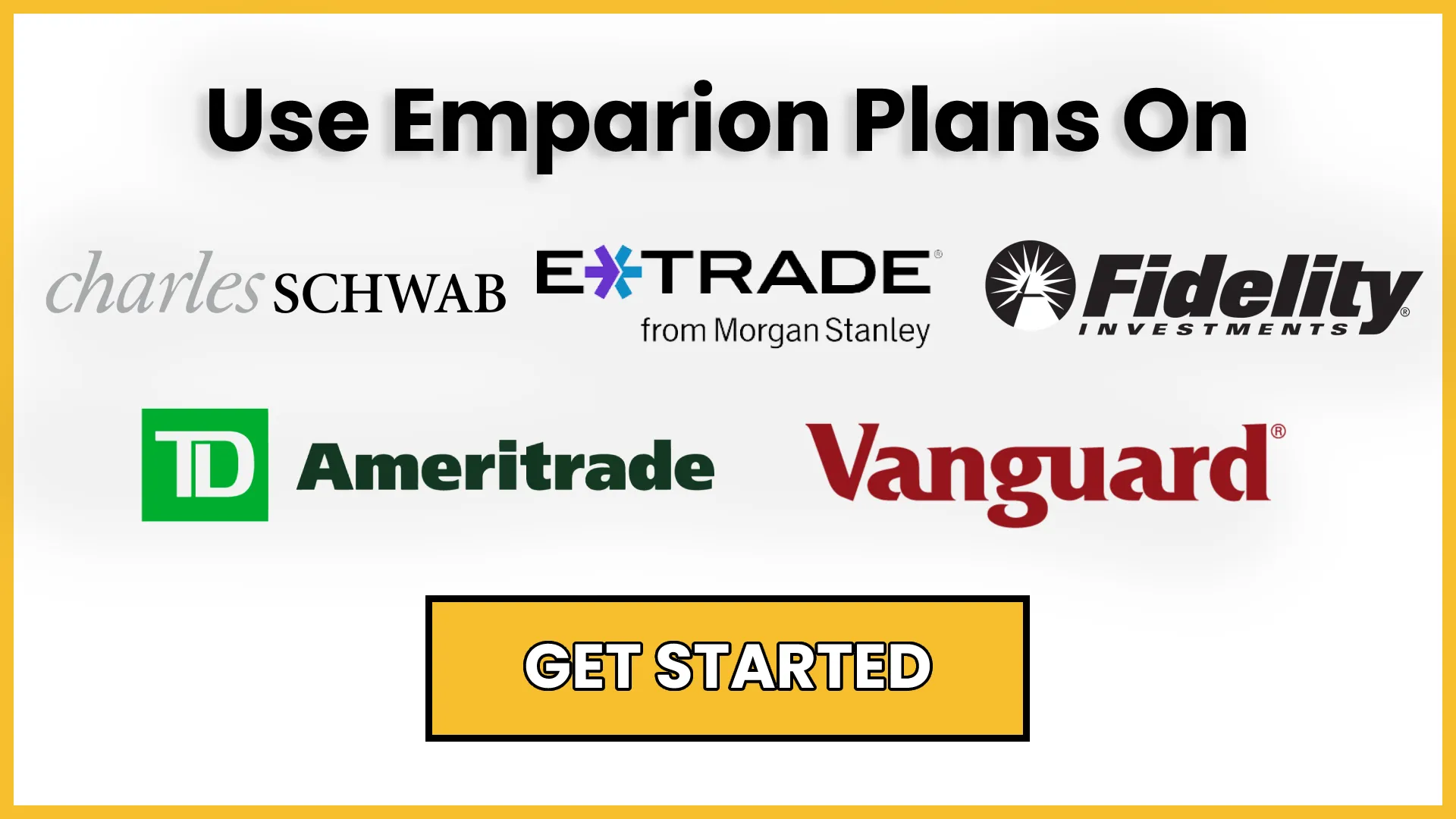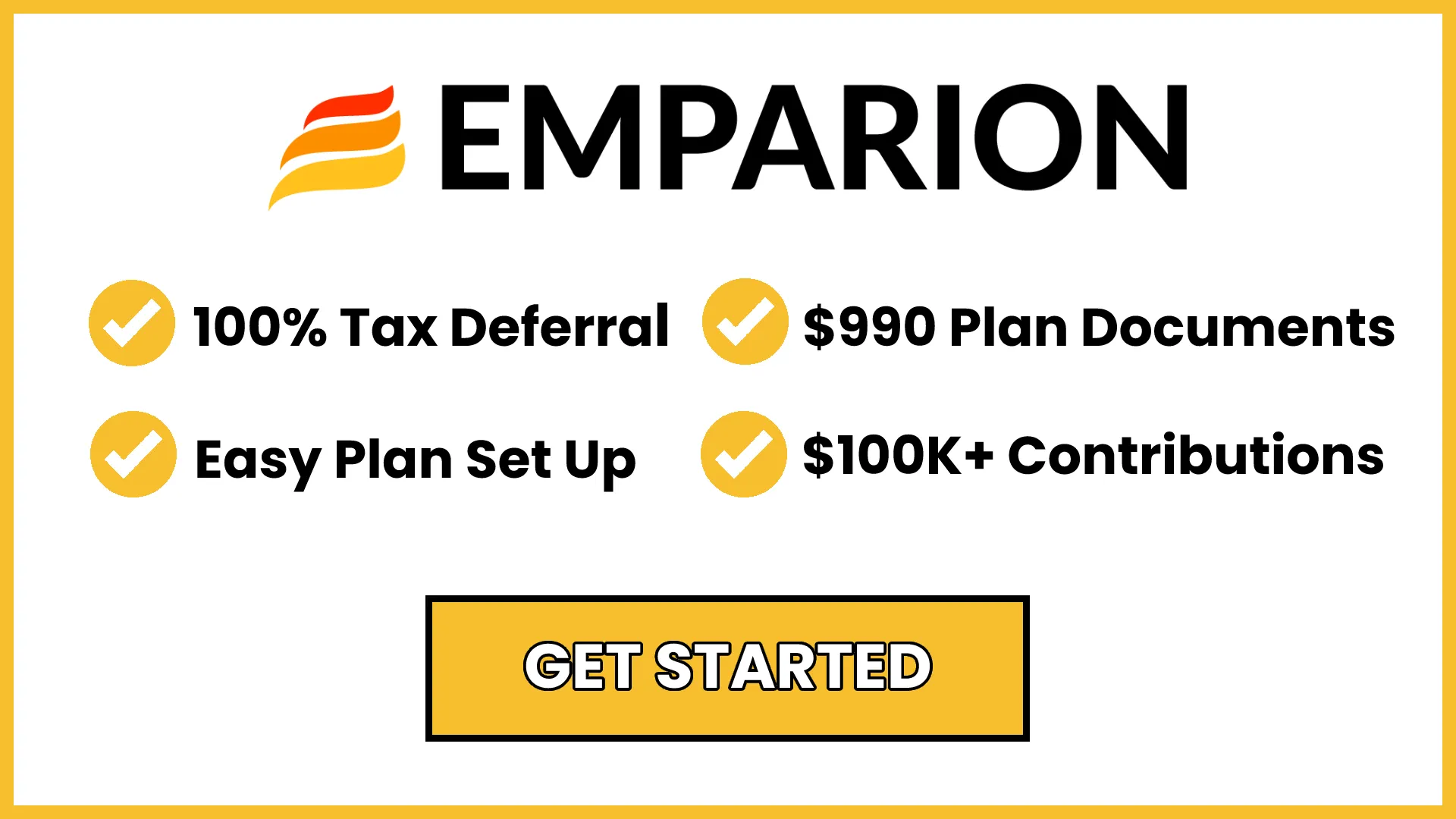So, you have your defined benefit plan set up. You’ve even opened up your investment account. Deciding upon your defined benefit plan investment options might be the hardest part.
What investments do you select? You know your plan has an implied interest crediting rate of 5%, but you need to know how to mimic that rate.
We know investment decisions can be challenging. You have many options and many different strategies available to you. But you’ve made your money working hard at your business and are not necessarily an investment advisor or financial planner.
Quick Links:
Some background
We’re here to offer you a few defined benefit plan investment options. Please realize that we are not investment advisors and cannot give you financial or investment advice. But what we can do is define some of the critical investment terms and give you a few examples of how our clients have structured their investments.
Please don’t take these examples and run with them. Make sure you discuss with your financial advisor that they suit you. The goal is to give you conservative investment options that mimic your interest crediting rate. So, let’s get started.
Defined Benefit Plan Investment Options
You know your portfolio has to be conservative, but you don’t see how it can be structured to optimize your defined benefit plan. Remember that you can invest in almost anything. But you want to keep your investment returns as close to 5% as possible.
Volatile returns or large swings will cause your annual contributions to fluctuate widely. You want consistent contributions to lower your effective tax rate. Large swings in investment returns can make your tax planning much more challenging.
Many people throw their money into stocks and let it ride with the market. But we certainly advise against it. If you throw all your assets into the stock market, know that you could be subject to swings in contribution rates. You should have ample cash reserves set aside in case of wide swings.
| Conservative Investments ✅ | Volatile Investments ❌ |
| Certificate of Deposit (CD) | Private Notes & Loans |
| Dividend Stocks | Crypto & Bitcoin |
| Short-Term Bonds | Tech Stocks |
| Index Funds | Real Estate |
If your investment returns substantially exceed 5%, it will reduce your future contributions. Conversely, if your investment returns are negative or well below 5%, it will tend to push contributions higher.
Many clients will invest in ETFs, mutual funds, stocks, and bonds. There are plenty of cash balance plan investment options.
We have many clients who manage their own investments or need clarification with some of the terminology. So, before we go through some examples, let’s talk about some common definitions to ensure people understand the basics.
What is a Certificate of Deposit (CD)?
Whether you’re just looking for a safe place to keep your money or a seasoned investor, you may want to know what a certificate of deposit (CD) is. A CD is a savings account offered by banks and credit unions. Unlike a traditional savings account, a CD is guaranteed to pay interest at a specified rate.
The rates on a certificate of deposit will be higher than a traditional savings account. The higher rates allow you to earn more interest in a CD than in a regular savings account. Many CDs will have rates from 3% to 5%.
There are also penalties for early withdrawals. These penalties may cut into your earnings. The terms and conditions of a deposit agreement will outline how the penalties will work.

There are a variety of CDs available, from one-month CDs to 10-year CDs. Almost all consumer financial institutions offer a CD. However, some banks and credit unions have minimum deposit requirements.
If you need clarification on whether a CD suits you, visit your investment custodian website (Fidelity, Vanguard, Schwab, etc). Several online banks offer better CD rates than traditional banks. You can also contact a deposit broker to get a better rate. A deposit broker is not a licensed financial professional and is not a financial advisor. However, many deposit brokers are affiliated with investment professionals.
Another benefit of a certificate of deposit is that it is low risk. The money you contribute to a CD is insured up to $250,000. You can leave your money in a CD for a fixed time.
What Is a Mutual Fund?
Investing in mutual funds can be smart, but you need to consider your personal goals. You’ll need to consider your risk tolerance, the amount of money you can invest, and how you want to pay for it. It’s also a good idea to consult an investing pro to help you choose the right fund.
A mutual fund is a pool of money from multiple investors. The funds invest in stocks, bonds, and other securities. You can purchase them directly from the fund provider or through an employer-sponsored retirement account. You can also trade the funds on the stock market.
Some funds have complicated strategies, such as leveraging through derivatives. Others are passively managed, meaning the fund manager doesn’t actively manage the investments.
Looking to Get $100,000+ Into Retirement?
We’ll show you the #1 tax and retirement strategy!
The best way to determine the cost-effectiveness of a mutual fund is to compare it to other similar funds in the market. You may need to deposit a minimum amount into your account before you can begin investing. Some providers waive these minimums. You can also take advantage of a brokerage account, which provides more cash balance plan investment options.
The most expensive a fund can be the cost of buying and selling shares. Shareholder fees are also associated with mutual funds. These fees may include commissions, redemption fees, and sales loads. They can add up quickly and can hurt your returns.
The best way to invest is to diversify your portfolio. Diversification can help mitigate volatility in a mutual fund. It would help if you also considered your tax preferences, as some funds may be subject to a special tax.
What is an ETF?
An ETF is a pooled investment vehicle that trades on stock exchanges like a stock. The main difference is that an ETF’s value should match its underlying assets’ value.
ETFs have been one of the most popular trends in investing in the last two decades. There are several types of ETFs, including index and managed funds. However, not all ETFs are created equal. Some ETFs focus on specific industries or stock indexes. Some ETFs offer exposure to certain countries. There are even inverse funds that can allow investors to make a profit when underlying assets lose value.
ETFs are similar to mutual funds because they offer investors a percentage share of a pooled asset. However, unlike mutual funds, ETFs do not provide voting rights. Investors can use any broker to buy or sell ETF shares.

ETFs can track almost any asset. They can track the performance of an entire country’s economy or a small group of companies within a subsector. In addition, they are governed by the same regulations as mutual funds. They also have very low costs. However, they do carry some investment risk.
Most ETFs trade at a price roughly in line with their net asset value. However, prices may fluctuate significantly. In addition, ETFs must post a marked-to-market net asset value of their portfolio each trading day.
Conservative Stock Portfolio
Investing in a conservative portfolio effectively protects your money from market volatility and reduces risk. A conservative portfolio consists of big, stable, financially sound companies. Historically, these companies have offered the highest dividends and lowest volatility.
The first step in creating a conservative portfolio is to develop a framework. Determining the percentage of your total investment that should be divided between different sectors is the key to reducing the overall risk of your portfolio.
For example, you might want to invest half of your equity allocation in large companies and the rest in smaller, more conservative companies. Consider international funds and emerging market funds. You can choose from many different options for building a conservative portfolio.
If you are an experienced investor, you may consider using a conservative investment strategy to decrease your exposure to market volatility and reduce your risk. However, you should know that a conservative investment strategy may not be appropriate for all investors.
Typically, a conservative portfolio has a growth expectation of around 6% a year. The amount of growth in your portfolio will depend on the type of investment you make and your time horizon. Typically, you should keep some money in cash and fixed-income investments. Consider ETFs, exchange-traded funds allowing you to own the entire stock market.
In addition, invest in defensive stocks to provide stable earnings and a constant dividend. It would help if you also looked for companies with a long track record and minimal debt.
Example #1 – CDs with Stock Index
In the past decade, getting any yield from CDs or money market funds has been challenging. But that’s all changed now.
You can get a portfolio of CDs that can provide a return close to your interest crediting rate. This, of course, provides you with very minimal risk.
But you can combine this strategy with stocks to give you a little bit of upside but still protect your downside with the extensive portfolio of CDs.

One investor we spoke with recently had just such a portfolio. He combined 80% of his funds to obtain an in CDs to get an overall yield of 4.2%. With the additional 20% of his funds, he invested in an S&P 500 index fund. The S&P 500 will typically perform around 8% on a long-term basis.
But with the 20% exposure to stock, the investments will obtain some upside if there are small investment returns. But you will cushion the downside because of the extensive CD portfolio. The targeted range for the investor was an overall return of around 2-8%. These defined benefit plan investment options have a good chance of achieving those returns.
Example #2 – Bond & Money Market ETFs
The client in the next example did something a little different. He chose to invest only in ETFs. These ETFs are invested solely in bonds, commercial paper, and short-term money market instruments.
His goal is to achieve a low single digit return, even if it is below the targeted 5% rate. He has a marginal tax bracket of over 45% and expects consistently high income over the next several years.
As such, he is OK if the plan earns a return less than the target. This will give him slightly higher future contributions that will allow him large future tax deduction. He is offsetting the lower rate of return by investing his 401k and IRAs in tech stocks and growth large stocks. These can be cash balance plan investment options.
ETFs will provide you with diversification, so you don’t have to buy individual instruments. One of the downsides of CDs is that when they mature, people often need to remember to renew a new CD. This will bring down overall returns. Investing in an ETF gives you diversification and guarantees that your funds are all 100% allocated.
Example #3 – Diverse Mutual Fund Basket
Investing in mutual funds can be a convenient way to diversify your investment portfolio. However, it is important to be aware of the risks associated with investing in mutual funds. You should also consider the charges and expenses associated with each fund.
Some mutual funds have high expense ratios or sales charges. The fees you pay for a fund can greatly affect its performance. It is advisable to consult a financial adviser to determine the best defined benefit plan investment options for your needs.
Mutual funds can be purchased through a brokerage account. However, you should also consider the fees associated with the brokerage company. If you want to add a mutual fund to your investment portfolio, you should look for a broker that has low management fees and transaction fees.

You may also want to consider investing in individual stocks. However, investing in stocks comes with a high risk. It is possible to build wealth in the market, but you also risk losing it. The best way to invest in individual stocks is to research the companies you want to invest in.
Mutual funds invest in a portfolio of securities, which may include stocks, bonds and cash alternatives. They may also pay dividends. This diversification can reduce your risk, but it does not guarantee profits with any cash balance plan investment options.
Some funds, like balanced funds, are designed to earn higher returns than income funds. Income funds are designed to invest in bonds that pay dividends. Generally, these funds have lower returns than growth funds.
Bottom Line on Defined Benefit Plan Investment Options
Remember that we can’t provide you with financial advice. But we can give you a starting point. Assuming you manage your own money, This allows you to research some of the topics here and develop a portfolio that works for you.
What is the proper allocation? This isn’t something we can give you. Each client situation is unique, and they have different risk profiles.
The critical thing to remember is to keep your portfolio conservative. You can offset the conservative nature of these investments by investing in 401(k)s and IRAs more aggressively. This can keep your overall Pat portfolio balanced and canon chief your financial objectives.
Remember that for most of our clients, the number one goal with these plans is to have consistently high tax-deductible contributions. Using some of the concepts discussed will allow you to achieve this.
